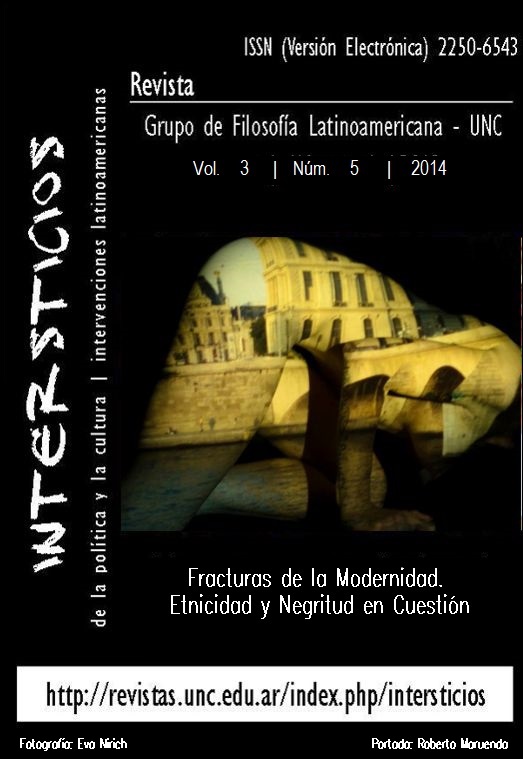NOMADISMO IDENTITARIO. COLONIALIDAD, GÉNERO/SEXO Y RELIGIÓN EN LAS PERFORMANCES DE GIUSEPPE CAMPUZANO Y ALMA LÓPEZ DESDE LA POSICIÓN DEL TERCER FEMINISMO.
Abstract
El “culto del encubrimiento” se advierte en las políticas borbónicas de control sobre los cuerpos femeninos y feminizados durante la colonia en América Latina. Es a partir de estas interferencias, entendidas como momentos teóricos, en las que me gustaría concentrarme para desarrollar el concepto de interseccionalidad con el de “nomadismo identitario” y “Tercer feminismo” en el que me encuentro trabajando. Considero que estos conceptos sintetizan de modo crucial las discusiones más actuales que mantiene la propuesta del feminismo descolonial, decolonial y poscolonial en el sur sobre:
1) la discusión sobre colonialidad y género; la religión y el disciplinamiento de los cuerpos;
2) la relación entre la conciencia moderna y el cuerpo como su soporte, en que emergen desde el locus de enunciación, la categoría de “tapada” en Perú desde la perspectiva del travestismo disciplinario.
Mi propuesta metodológica consiste en interpretar comparativamente las intervenciones performaticas descoloniales sobre las vírgenes tomando: el Museo Travesti del Perú (2008); el arte de la chicana Alma López sobre la Virgen de Guadalupe en “Our lady” a través de una lectura a contrapelo de la historia (Guha, 1988; Spivak, 1999).
Palabras Claves: feminismos – colonialidad - nomadismo identitario
Abstract:
The "cult of the cover-up' it is warns in Bourbon policy control over the female and feminized bodies during the colony in Latin America. It is from these interferences, understood as theoretical moments, in which they would like to focus to develop the concept of intersectionality with "nomadism identity" and "Third feminism" which I'm working. I believe that these concepts synthesize in a crucial way the current discussions that keeps the decolonial feminism, decolonial and post-colonial proposal in the South over:
1) discussion of coloniality and gender; religion and the disciplining of the bodies;
2) the relationship between the modern consciousness and the body as its medium, in which emerge from the locus of enunciation, the category of "stuffy" in Peru from the perspective of disciplinary cross-dressing.
My proposed methodology consists in a comparatively interpret of performative decolonial interventions about virgins taking: the Transvestite Peru Museum (2008); the art of the chican Alma López about the Virgin of Guadalupe in ' Our lady ' through a reading against the grain of history (Guha, 1988; Spivak; 1999).
Keywords: feminism – coloniality – identitary nomadism.
Downloads
Downloads
Published
Issue
Section
License
Authors who have publications with this journal agree to the following terms:
a. Authors will retain their copyright and grant the journal the right of first publication of their work, which will simultaneously be subject to the Creative Commons Attribution License that allows third parties to share the work as long as its author and first publication in this journal are indicated.
b. Authors may adopt other non-exclusive license agreements for distribution of the published version of the work (e.g., deposit it in an institutional telematic archive or publish it in a monographic volume) as long as the initial publication in this journal is indicated.
c. Authors are allowed and encouraged to disseminate their work through the Internet (e.g., in institutional telematic archives or on their web page) after the publication process, which may produce interesting exchanges and increase citations of the published work (see The effect of open access).


